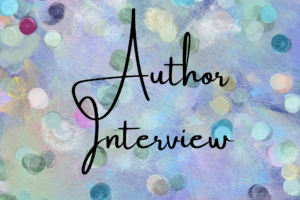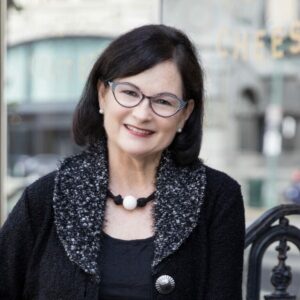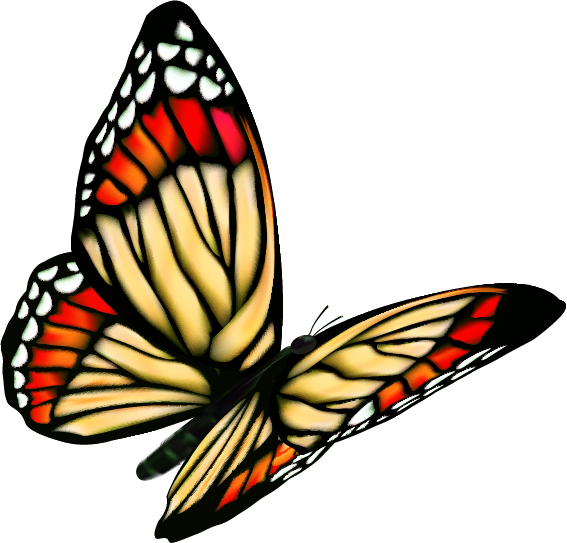Connection Is Everything: An Interview with Casey Mulligan Walsh
 Even though I don’t always meet the authors I interview in real life, we often overlap in at least one virtual arena. Such is the case with Casey Mulligan Walsh, who is a fellow member of an online author group and Motina Books author. She’s an incredible writer and generous human, one of those folks I do hope to actually meet someday. Her debut memoir, The Full Catastrophe: All I Ever Wanted, Everything I Feared, is out in a few days, and it’s resonating with readers. One reviewer wrote that the book is “a heartbreaking and inspiring story of incredible resilience,” while a second said, Here is a beautifully written testament to the transformation of loss and grief into hope and redemption.” Multiple readers felt that Casey captured their own story in book format. Regardless of your life experience, Casey’s writing will rope you right in and teach you a life lesson you won’t forget.
Even though I don’t always meet the authors I interview in real life, we often overlap in at least one virtual arena. Such is the case with Casey Mulligan Walsh, who is a fellow member of an online author group and Motina Books author. She’s an incredible writer and generous human, one of those folks I do hope to actually meet someday. Her debut memoir, The Full Catastrophe: All I Ever Wanted, Everything I Feared, is out in a few days, and it’s resonating with readers. One reviewer wrote that the book is “a heartbreaking and inspiring story of incredible resilience,” while a second said, Here is a beautifully written testament to the transformation of loss and grief into hope and redemption.” Multiple readers felt that Casey captured their own story in book format. Regardless of your life experience, Casey’s writing will rope you right in and teach you a life lesson you won’t forget.
Welcome, Casey!
Christina: Congrats on the publication of The Full Catastrophe: All I Ever Wanted, Everything I Feared, which “tells of a life of loss and sorrow transformed into one of hope and redemption.” What drew you to memoir specifically? Did you ever contemplate fictionalizing the story?
Casey: I knew from the first personal essay I wrote in early 2011 that memoir was the right genre for me, and I never considered writing autofiction or fiction in its place. Though that may be the perfect choice for others, I thought that the arc of my story might feel implausible if written as fiction, which I suspect is true for many memoirists. But beyond those logistics, it felt important for me to tell my story as it happened for me, to explore the ways that I participated in events where I’d previously felt powerless, and unpack the themes I perhaps hadn’t recognized as I lived the book’s events. I also hoped it would be a story that could help or inspire others who have experienced repeated loss or navigating frightening uncertainty and are wondering how to build a life that can hold space for joy while honoring grief.
Christina: The title is fantastic and comes from Zorba the Greek. How did you settle on the title? Did anything else come close to being a contender?
Casey: Once I heard this phrase many years ago, I knew it was the perfect title for my memoir. I love it for the meaning Zorba imbued, as Jon Kabat-Zinn describes it in his book Full Catastrophe Living, “the poignant enormity of our life experience.” As I write in the book, after having lost my own family so young, “That’s what I wanted, too. Bring on the sleepless nights and the messy diapers, the overwhelming years of lessons and sports practice, the college expenses, the inevitable relationship challenges. I wanted all of it, everything I believed I’d been denied, and I was committed to making it happen.”
But this title has a double meaning in the context of my story. Though I longed for “the full catastrophe” of life and worked hard to build a family out of the ashes of the one I’d lost as a child, I later experienced the literal catastrophe of watching that family crumble, then losing my son, Eric, when he was only 20.
This is why the subtitle, which was far more difficult to land on than the title itself, works so well for me. It illustrates the two meanings of the full catastrophe—how my life ended up being “all I ever wanted” and also “everything I feared.”
Christina: The term catastrophe invokes a sense of chaos and despair. But as your subtitle implies, there’s hope and positivity in the story, a sort of rising from the ashes. How did you approach writing the book so as to find the proper balance of negative and positive?
Casey: In order to achieve that balance, it was essential that I write the story start to finish, then look at the draft as a whole. From my earliest essays, I found the difficult times far easier to access than the happy ones that occurred earlier on in our marriage, when our children were younger. During subsequent drafts, I made a concerted effort to render more of those happy times, which made the story deeper and more real. As often happens when we write about our lives, I learned so much I hadn’t seen before about myself and others, and this brought me closer to understanding the part I played in everything that happened.
But themes of hope and positivity were always there, since they’re a core part of who I am. I wrote in present tense while still occasionally inserting the voice of the knowing narrator, which can sometimes be a challenge. But I was determined not to repeatedly jump ahead with phrases like “one day I’ll understand,” instead allowing readers to experience life along with me, without the benefit of future resolution. Because of this, much of the understanding of how grief and joy coexist, how whatever isn’t love stems from fear, and how true belonging only comes from the courage to be ourselves comes later in the book.
Christina: Readers love to hear about an author’s publishing journey. Would you care to share a little bit about yours?
Casey: I began writing essays in 2011, and by 2017, I decided to sketch out the outline of a book. Essay collections can be impactful when done well, but I believed from the start that this story needed to be told in connected narrative form. By 2019, I had a completed draft and traveled to a workshop in Tuscany with editor and teacher Allison K. Williams, where I made major cuts and began to see the story take shape. After working with a couple of other editors, I queried around 30 agents in two batches, then moved to submitting my manuscript and proposal to indie and university presses. In March 2023, I received an offer from Motina Books, which I ultimately accepted, then signed with them in July 2023. We’ve worked together for the past year and a half in the lead-up to release on February 18, 2025. It’s hard to believe we’re finally here.

Christina: I love the quote by Joseph Campbell you have on your website: “We must be willing to let go of the life we have planned so as to have the life that is waiting for us.” When and how did you decide to put this front and center on your site? Is it something you still need reminding of?
Casey: That quote was one of the first things I added to the site as I was building it. Letting go is necessary so often as we move through life, yet it’s not something that’s often come naturally for me or, I suspect, many of us. The downside of the sort of determination that got me through the toughest times is that it can keep us from knowing when it’s time to walk away or move in a new direction. It can also allow us to fool ourselves into thinking we have control, when in fact that’s so often an illusion. And yes, I can absolutely benefit from being reminded of this, which is another way of saying that life rarely goes according to plan, and we would do well to lean into uncertainty and change and see what they have to teach us.
Christina: You were a speech-language pathologist. How did you become interested in that profession? Does that experience inform your writing or writing process at all?
Casey: Back when I was in high school in the early 1970s, I spent time as an aide to the speech therapist and worked with a boy who was deaf. I’d always loved language, and I was drawn to a profession that helped individuals at all levels become more effective communicators. But as I illustrate in the memoir, at that time in my life I needed a family more than I needed an education, or at least it felt that way. So I wrapped up a two-year degree in business and settled in a small upstate New York town to raise a family.
When I decided to go back to school in the early 1990s, majoring in Communication Disorders, which leads to a career as a speech-language pathologist, seemed the obvious choice. At that time, I had three school-age children, and every course I took helped me see their strengths and needs more clearly. I’d been frustrated with their not receiving the support I believed they needed in specific areas over the years, and I was determined to provide those things for my own students.
So much of what I learned over the course of my career has been relevant to my writing. Besides addressing speech, oral language, and many other disabilities, I worked with students of all ages on literacy, from the mechanics of reading and spelling to comprehension to effective writing. Remembering how I’d focused on connecting ideas with “but,” “because,” or “so,” for example, informed the way I connected scenes in my memoir through causality, contradiction, and consequence. I also learned some foundational concepts, such as “stability creates mobility,” which can be applied in so many arenas, including physical, mental, and emotional health.
Christina: In your bio you say, “I’ve seen that grief and joy can and do coexist, that how we choose to see the world impacts who we become. That, in the end, it’s all about connection.” What connections are most meaningful to you? How can we use “connections” to make the world a better place?
Casey: Connection, for me, is everything. Understanding that we’re not separate, though we often build walls thinking they’ll keep us safe, is the first step toward focusing on the things that unite us. For me, as for many of us, the connections that matter most are those with family and friends. But if we believe on a deep level that what one does impacts us all, whether in a negative or positive manner, it changes our perspective and can make the world a kinder, more compassionate place for everyone.
Christina: You’re often found promoting awareness of familial hypercholesterolemia, something many people deal with. What are three things you’d like for everyone to know about this disease?
Casey: Thank you so much for asking this question. I could talk to people all day about this topic, which has affected me personally through early loss of family members, my own health, and the health of my children and grandchildren.
*Familial hypercholesterolemia (FH) is common, affecting 1 in 250 people, yet approximately 70 percent of those who have it have not been diagnosed. If an individual has FH, each of their first degree relatives (parents, siblings, children) has a 50 percent change of also having this disorder.
*FH is treatable. With advances in medications, including effective statins and, more recently, PCSK-9 inhibitors, those diagnosed early can experience a normalized life trajectory. But testing in childhood is not widespread, with only 10-20 percent of pediatricians currently following the American Academy of Pediatrics guidelines for testing all children between ages 9 and 11 and those with FH in the family at age 2.
*If, as an adult, your LDL (or “bad cholesterol”) is 190 or over, lifestyle changes have little impact, and you have a family history of early heart events, you may have FH. Knowing your LDL and discussing the possibility that your high cholesterol could be genetic can save not only your own life but those of family members as well.
Christina: What’s next for you?
Casey: Once I emerge from the all-consuming, happy task of releasing a book into the world, I’m hoping to get back to writing essays. My writing often veers to the literary, and I’d like to broaden my focus to include more media outlet pieces. In terms of longer projects, I’ve thought of assembling an essay collection on how we live with grief beside joy and how each informs the other decades after one or more significant losses. I have a storehouse of essays that would fit with this topic, and I’d love to experiment with including unconventional forms as well (e.g., hermit crab, braided, and collage essays).
Also, I’m one of five writers with an interest in flash creative nonfiction who started In a Flash, a new Substack literary magazine, in 2024, with our first issue published on January 1, 2025. We accept submissions of 500 words or less on a monthly theme, then select a single piece and highlight the writer as that month’s featured author. Each of us is devoted to providing this platform as an act of literary citizenship and as a way of giving back to the community that has nurtured our own development as writers. I look forward to watching our fledgling project grow and seeing where this venture takes us and the writers we select.
Casey can be found in multiple places!
Website: https://caseymulliganwalsh.com/
X: @CMulliganWalsh
Instagram: @caseymulliganwalsh
Threads: @caseymulliganwalsh
Facebook: @casey.m.walsh.1
Thanks to Casey for agreeing to this interview! Feel to leave a comment!

